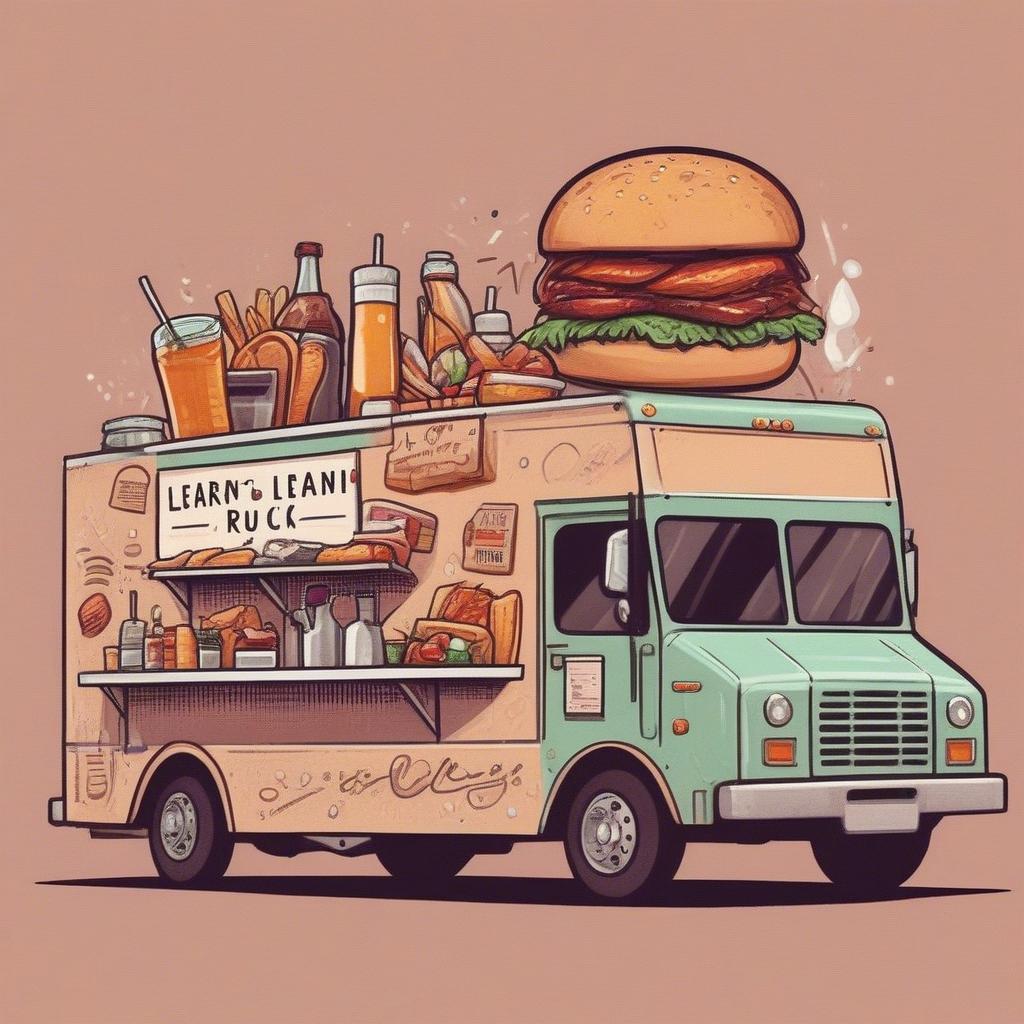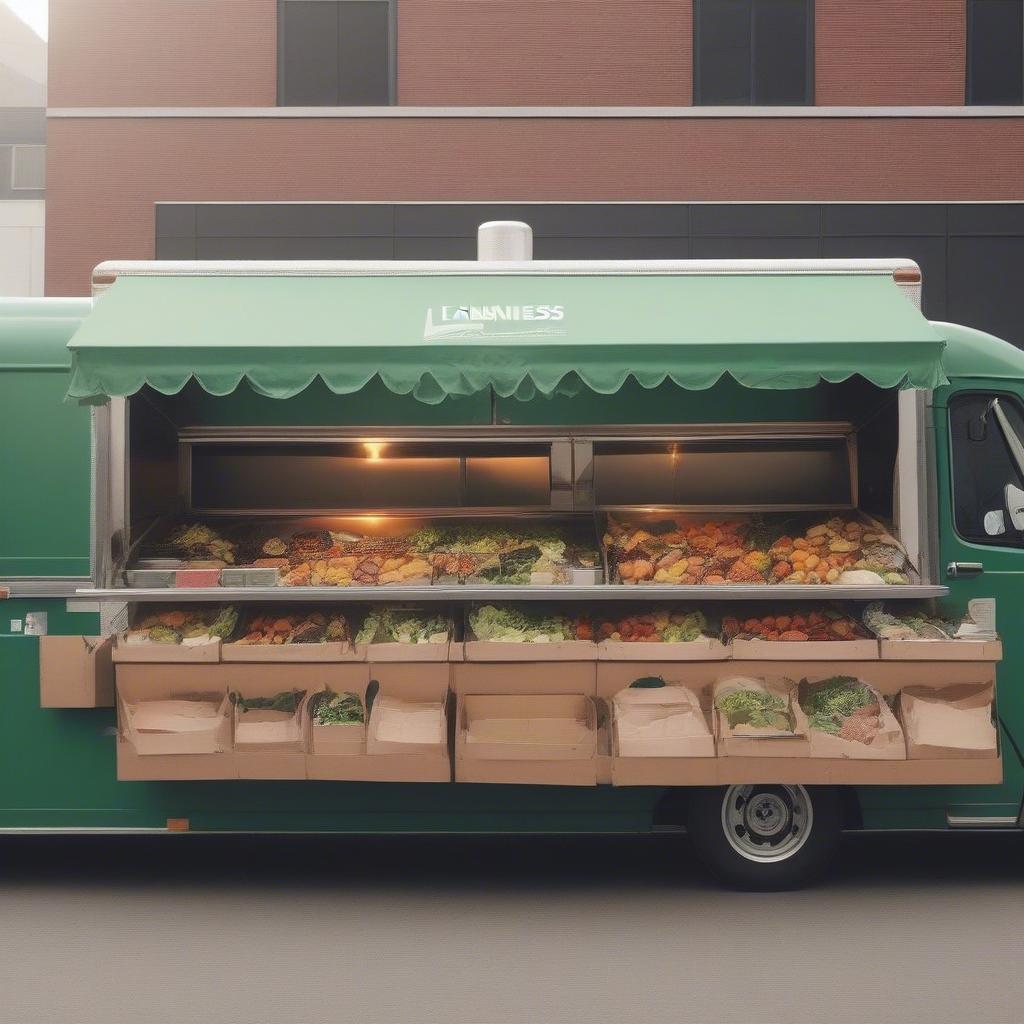
How to Keep Your Food Truck Clean and Compliant
Running a food truck is a whirlwind of delicious smells, happy customers, and constant motion. But beneath the surface of a bustling mobile kitchen, there’s a critical element that determines your success and longevity: cleanliness and compliance. A spotless truck isn’t just about appearances; it’s about protecting your customers, safeguarding your reputation, and ensuring you stay on the right side of the law. This article will be your comprehensive guide to mastering food truck cleaning, implementing essential hygiene tips, and navigating complex compliance tips, ensuring your business thrives.
Why Cleanliness & Compliance Matter in the Food Truck World
Imagine biting into a delicious taco from a food truck, only to find a hair or worse. The experience goes from amazing to awful in an instant. That’s the power of cleanliness (or the lack thereof). Beyond the immediate ‘yuck’ factor, poor hygiene can lead to serious consequences:
Health Hazards and Customer Safety
- Foodborne Illnesses: Bacteria like Salmonella, E. coli, and Listeria thrive in unclean environments. Serving contaminated food can cause serious illness, costing you customers and putting their health at risk.
- Allergen Control: Inadequate cleaning can lead to cross-contamination, posing a threat to customers with allergies. Even trace amounts of allergens can trigger severe reactions.
Protecting Your Brand and Reputation
- Negative Reviews: A dirty truck is a magnet for negative reviews. Word of mouth travels fast, and a reputation for uncleanliness can destroy your business.
- Loss of Trust: Customers want to feel confident in your food and hygiene practices. A clean truck fosters trust and encourages repeat business.
- Reduced Customer Base: Customers may choose other vendors if they do not trust your food preparation hygiene.
Legal Compliance and Avoiding Penalties
- Health Inspections: Health departments routinely inspect food trucks. Failing an inspection can lead to fines, temporary closures, and even the loss of your license.
- Permit Revocation: Repeated violations of health codes can result in your permit being revoked, effectively shutting down your business.
- Legal Battles: In severe cases, foodborne illness outbreaks linked to your truck can lead to legal action and costly settlements.
Creating a Robust Cleaning Routine: Your Food Truck’s Secret Weapon
Consistent cleaning is the cornerstone of a compliant and thriving food truck. Instead of seeing it as a chore, consider it a crucial investment in your business’s success. Here’s how to craft a cleaning routine that keeps your truck sparkling:
Daily Cleaning Tasks: The Foundation of Cleanliness
- Pre-Shift Preparation:
- Sanitize Surfaces: Wipe down all food preparation areas, counters, and equipment with a food-grade sanitizer.
- Check and Clean Equipment: Ensure all equipment is clean, functioning properly, and ready for use (e.g., grills, fryers, refrigerators).
- Set Up Handwashing Station: Ensure your handwashing station is fully stocked with soap, paper towels, and sanitizer.
- Empty Trash Receptacles: Start with fresh, clean bins to minimize odor and pests.
- During Service:
- Frequent Handwashing: Wash hands thoroughly with soap and water for at least 20 seconds after handling raw food, using the restroom, or touching anything that may contaminate.
- Sanitize Between Tasks: Wipe down cutting boards and surfaces between handling different food types.
- Spill Cleanups: Clean spills immediately to prevent accidents and contamination.
- Replace Utensils: Regularly replace soiled or used utensils with clean ones.
- Monitor Temperature: Regularly check the temperature of refrigerators and hot holding units to ensure food safety.
- Post-Shift Cleaning:
- Deep Clean Equipment: Clean all cooking equipment thoroughly, including grills, fryers, and ovens.
- Clean Refrigerators: Empty, clean, and sanitize refrigerator interiors and shelves.
- Wash Utensils & Equipment: Wash all utensils, cutting boards, and preparation equipment with soap and hot water, then sanitize.
- Mop Floors: Mop the food truck floor using a degreaser and sanitizer.
- Dispose of Waste: Empty and sanitize all waste containers.
- Restock Supplies: Replenish all cleaning supplies, handwashing stations, and paper products.
Weekly Cleaning Tasks: Taking it a Step Further
- Exhaust Hood Cleaning: Clean your exhaust hood and filters to ensure proper ventilation and remove grease buildup.
- Deep Clean Refrigerator Seals: Pay special attention to the refrigerator door seals, which can harbor bacteria.
- Clean Storage Shelves: Remove all items from storage shelves and wipe down both the shelves and stored items.
- Water Tank Cleaning: If your truck uses a water tank, ensure it’s drained, cleaned, and sanitized regularly.
- Exterior Cleaning: Wash the exterior of your food truck, removing any grease or dirt buildup.
Monthly Tasks: The Deep Dive
- Equipment Maintenance: Schedule professional cleaning and maintenance of your cooking equipment, such as grease traps and fryers.
- Pest Control: Implement a pest control plan, including monitoring and addressing any signs of infestation.
- First Aid Kit Check: Ensure your first aid kit is well-stocked and all supplies are up to date.
- Review Cleaning Protocols: Evaluate the effectiveness of your cleaning routine and make adjustments as needed.
Example: A Daily Checklist for Food Truck Cleaning
To make sure nothing is missed, use a daily checklist. Here’s an example:
Pre-Shift:
- [ ] Sanitize all prep surfaces
- [ ] Check and clean all equipment
- [ ] Stock handwashing station
- [ ] Empty trash
During Service:
- [ ] Wash hands frequently
- [ ] Sanitize surfaces between tasks
- [ ] Clean spills immediately
- [ ] Replace used utensils
- [ ] Monitor temperatures
Post-Shift:
- [ ] Deep clean all equipment
- [ ] Clean refrigerators
- [ ] Wash and sanitize utensils
- [ ] Mop floors
- [ ] Empty and sanitize waste containers
- [ ] Restock supplies
Hygiene Tips: Beyond Cleaning
While cleaning is crucial, focusing on personal and operational hygiene tips amplifies your efforts to prevent contamination.
Hand Hygiene: The Number One Priority
- Proper Handwashing Technique: Wash with soap and warm water for at least 20 seconds, scrubbing thoroughly between fingers, under nails, and on the backs of hands.
- When to Wash: Wash hands after touching raw foods, using the restroom, coughing, sneezing, handling garbage, and before and after handling food.
- Hand Sanitizer: Use hand sanitizer as an extra measure, but don’t use it as a replacement for handwashing.
- Gloves: Wear food-safe gloves when handling ready-to-eat foods. Change gloves between tasks and if they become torn or contaminated.
- Keep Nails Short and Clean: Maintain short, clean fingernails to prevent bacteria from accumulating.
Food Handling Practices
- Prevent Cross-Contamination: Use separate cutting boards, utensils, and storage containers for raw and ready-to-eat foods.
- Temperature Control: Cook food to proper internal temperatures and store hot foods above 140°F and cold foods below 40°F.
- First In, First Out (FIFO): Organize storage so that older items are used first to minimize waste and the risk of spoilage.
- Proper Storage: Store food in airtight containers to prevent contamination and keep it fresh.
- Thawing Safely: Thaw frozen foods in the refrigerator, under cold running water, or in the microwave – never at room temperature.
- Avoid Double Dipping: Don’t dip utensils used for tasting back into the food container.
- Don’t Reuse Single-Use Items: Never reuse single-use items like disposable gloves or paper products.
Personal Hygiene
- Maintain Personal Cleanliness: Shower daily and keep hair pulled back or covered with a hairnet.
- Cover Cuts & Wounds: Cover any cuts or wounds with bandages to prevent contamination.
- Avoid Working While Sick: If you’re sick with a contagious illness, stay home to prevent spreading it to others.
- Appropriate Clothing: Wear clean clothing that covers exposed skin to minimize contamination.
- Limit Jewelry: Minimize or remove jewelry to reduce the risk of it falling into food.
Compliance Tips: Navigating the Legal Landscape
Navigating the compliance tips and legal requirements for a food truck can be complex. Here are key areas to understand and address:
Understanding Health Codes and Regulations
- Local Regulations: Research local health codes and regulations in your operating area. Regulations can vary by city, county, and state.
- Permits and Licenses: Obtain all required permits and licenses before you start operating. This may include a food vendor permit, business license, and vehicle inspection.
- Regular Inspections: Understand the inspection process, including what inspectors look for, and schedule a mock inspection to identify potential weaknesses.
- Stay Updated: Regulations change frequently. Stay informed of any updates or revisions to health codes and regulations.
- Food Safety Training: Ensure you and your staff complete food safety training courses. This will help ensure compliance with regulations and provide you and your team with skills to provide quality meals to customers.
Food Safety Plan (HACCP)
- Hazard Analysis and Critical Control Points (HACCP): Develop a HACCP plan that identifies potential hazards and establishes controls to prevent foodborne illness.
- Identify Critical Control Points (CCPs): Determine the critical points in your food preparation process where control is essential (e.g., cooking temperature, refrigeration, holding times).
- Implement Control Measures: Put measures in place to control identified risks (e.g., temperature monitoring, proper cooking procedures).
- Monitor Control Measures: Regularly monitor control measures to ensure effectiveness.
- Corrective Actions: Have procedures in place to address any deviations or problems that may arise.
- Record Keeping: Maintain thorough records to demonstrate compliance with your HACCP plan.
Equipment and Supplies
- Food-Grade Equipment: Use NSF-certified food-grade equipment to ensure safe food preparation.
- Proper Ventilation: Ensure your truck has proper ventilation to remove smoke, steam, and cooking odors.
- Refrigeration: Have adequate refrigeration to maintain food at safe temperatures.
- Hot Holding: Use proper hot holding equipment to keep food at safe temperatures until serving.
- Handwashing Station: Provide a dedicated handwashing sink with hot and cold running water, soap, and paper towels.
- Waste Disposal: Have adequate waste disposal containers and a system for proper waste removal.
- Fire Safety: Install and maintain fire extinguishers and a fire suppression system.
Employee Training and Procedures
- Food Safety Training: Provide all employees with regular training on food safety practices.
- Hygiene Practices: Train employees on proper handwashing, glove usage, and other hygiene procedures.
- Emergency Procedures: Train employees on emergency procedures, such as what to do in case of a fire, foodborne illness outbreak, or other incidents.
- Record Keeping: Train employees on the importance of record keeping and accurate documentation.
- Clear Expectations: Clearly define cleaning duties and responsibilities for each employee.
Example: Simple HACCP Outline
Here’s an example of a simple HACCP plan outline you can tailor for your food truck:
- Hazard Analysis: Identify potential food safety hazards in your menu and process (e.g., raw meat, improper cooking).
- Critical Control Points (CCPs): Identify points where hazards can be controlled (e.g., cooking temperature, refrigeration).
- Critical Limits: Set limits for each CCP (e.g., ground beef must be cooked to 155°F).
- Monitoring Procedures: Determine how you will monitor each CCP (e.g., using a food thermometer).
- Corrective Actions: Establish what actions to take if a CCP goes out of control (e.g., recook the food).
- Record Keeping: Keep records of monitoring activities and corrective actions.
- Verification: Review your HACCP plan regularly to ensure it is still effective.
Learn Business: Your Partner in Food Truck Success
Maintaining a clean and compliant food truck is essential, but it’s just one piece of the puzzle when it comes to running a successful business. That’s where Learn Business comes in. Learn Business is designed to support entrepreneurs like you by offering practical guidance and ready-to-use templates tailored to specific business needs. Our templates can help you streamline your processes and stay on top of your business operations, from creating customized cleaning schedules to drafting thorough checklists and implementing compliance systems.
Here’s how Learn Business can support your food truck business:
- Ready-Made Templates: Access templates for cleaning checklists, HACCP plans, employee training materials, and record-keeping systems.
- Business Development Guides: Get expert guidance on marketing, operations, and financial management.
- Customizable Forms: Tailor the templates to meet the unique needs of your food truck.
- Time-Saving Solutions: Save time by using pre-designed templates, so you can focus on other important areas of your business.
- Cost-Effective Resources: Access high-quality resources at an affordable price.
- Peace of Mind: Know that you have the resources and tools to effectively manage your business.
- Business Growth: Scale your business with the help of Learn Business’s guides and templates.
By partnering with Learn Business, you’re not just getting access to forms and templates; you’re gaining a powerful support system that is dedicated to helping your food truck flourish.
Final Thoughts: A Clean Truck is a Successful Truck
Keeping your food truck clean and compliant isn’t just a chore; it’s the bedrock of your success. By implementing a robust cleaning routine, practicing impeccable hygiene tips, and navigating compliance tips with precision, you not only protect your customers and your brand but also set yourself up for long-term viability. And with tools and resources like those offered by Learn Business, you can approach these challenges with confidence, transforming your mobile kitchen into a symbol of quality, safety, and deliciousness. Remember, a clean truck is a happy truck and a successful one. Your customers will notice, and your bottom line will thank you for it.



Leave a Reply